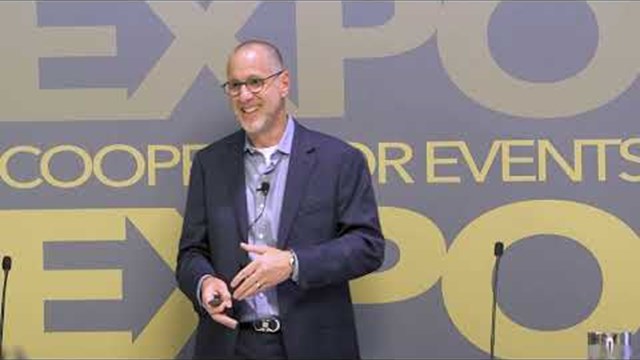When it comes to the subject of meetings—specifically monthly board meetings or annual unit owner meetings in condos, co-ops, and HOAs—there seem to be no neutral opinions. A few folks actually like these exchanges, but most dread them.
Some residents and board members report attending poorly conducted and ineffective meetings that wasted both time and energy, and resolved nothing. Others reported attending meetings where tempers flared, voices were raised, and hard feelings wiped out any possible efficiency or progress. At best, most board members and residents alike seem to regard the board/shareholder/unit owner meeting as a necessary evil.
Evil or not, board and shareholder/unit owner meetings are necessary. Co-ops and condominiums are governed by laws, and should be run as a business. Despite the technical advantages of online meetings, emails, text messages, and smartphones, the multiple layers involved with HOA management require regular meetings with formal minutes used to record attendance, votes, and finances. They're like the memory bank of the community—crucially important, even when you can't necessarily see them working.
So, what can boards, shareholders, unit owners, committees and property managers do to improve both the quality and productiveness of these regularly scheduled and necessary meetings? Where should board officers look for suggestions and education to improve the quality and outcome of board meetings? Here are a few ideas from some industry pros.
Robert’s Rules of Order and Beyond
Robert's Rules of Order was first published in February 1876 by Brigadier General Henry Martyn Robert, and contained guidelines intended for use by any 'deliberative assembly.' The book listed rules loosely modeled after those used at the time in the U.S. House of Representatives. Today, property managers and boards tend to use the protocols therein in varying degrees depending on the property.
Jay Cohen, vice president and director of operations for A. Michael Tyler Realty Corp. in Manhattan says he likes Robert’s Rules for meetings with large boards—those with 11-13 members, say—where strong leadership is needed to keep everyone on task and moving things forward.
While Robert’s Rules offer many structural and procedural suggestions, Cohen recommends boards (and future board members) take advantage of classes and seminars available all year long from a variety of sources. “When individuals do not understand the rules and regulations it wastes valuable time on constant explanations; education opportunities are available from many sources,” he says.
Cohen cites the New York Association of Realty Managers (NYARM) as one avenue. NYARM, which works in association with New York University's (NYU) School of Professional Studies, and The Real Estate Institute (NYREI), conducts a professional realty management certification program that provides training for building owners (both private and cooperative), managers, supervisors and maintenance personnel in building management.
In fact, just this past March, one of NYARM’s featured classes was on conducting meetings. A quick check of the website, www.nyarm.com, will provide upcoming programs and schedules.
Cohen also recommends trade shows and expos such as The Cooperator’s own Co-op & Condo Expo held every spring. The annual event includes hundreds of exhibits featuring products and services for housing cooperatives and condominiums and their residents. There is no cost to attend with advanced registration (www.coopexpo.com), and free advice booths and seminars provide easy opportunities to learn various skills.
Down to the Minutes
Another key component of a well-run meeting is proper minute-taking. Minutes are a meeting’s official business records, and are admissible in court. They should reflect any corporate actions taken, and whether the board acted correctly on any given decision. Given the legal ramifications, it is extremely important to elect a competent board secretary who can plan to attend most (if not all) meetings.
The minutes serve as a reminder of both finished and unfinished business and projects; what follow up is needed, who is responsible for that follow up, and what if any actions were finalized. The minutes also serve as a meeting history for new board members, residents, and property management firms, and finally the minutes offer a roadmap for the future, and help set the agenda for the next meeting.
That said, taking the minutes during a meeting does not mean slowing the proceedings to a crawl in an attempt to get every word uttered down on paper. The minutes should state who motioned for a vote, who seconded that motion, and whether the vote passed or failed. Anyone abstaining from voting should also be included in the records, but any information that may be considered privileged should not be discussed in an open meeting—or reflected in the minutes of the association.
Common Problems, Creative Solutions
Cohen sees his fair share of board meetings, and has identified a few recurring themes when meetings are problematic or generally not productive. “Some people get on the board with a personal agenda, and try to force that agenda on the rest of the board,” he says. “When the topics don’t align, and there is no agreement, items get tabled without a decision being made.”
Another reoccurring problem he mentions centers on the minutes. “The minutes need to be distributed right after a meeting, so corrections and adjustments are made well before the next meeting.” Cohen explains an agenda usually contains twenty different topics, and minutes and approval of the minutes is only one item. ‘When the minutes are circulated, and corrected, the vote to accept them at the meeting is a quick double confirmation.”
Cohen uses the minutes to help prepare the agenda for the next upcoming meeting. If there are projects requiring bids, Cohen prepares a spreadsheet, with vendor information and gets it circulating. By the time board members are assembled for the meeting, they are well informed and have limited questions. A short review usually results in a decisive vote. This system helps him keep a board meeting running smoothly and on track. He can usually keep meetings to an hour, leaving time for twenty to thirty minutes of socialization after the business is finished.
Cohen handles annual shareholder meetings much the same way; after the reports are in, and the upcoming board is selected, he opens the floor to questions and tries to end on a pleasant note with socializing.
Like Cohen, Andy Ashwal, the executive director of KW Property Management & Consulting, which has offices in New York City and in Florida, says the agenda is key to keeping a meeting on track and constructive.
Ashwal thinks an hour is a “healthy” block of time for a board meeting – and anything much over 90 minutes is excessive. The number one problem he sees with board meetings is not sticking to the agenda. The reasons vary, but a tendency to socialize at the beginning of the meeting—rather than at the end—is a common occurrence. “Board members are volunteers, with their neighbors, for their neighbors, and spending time catching up is often the cause for a delayed start,” he says.
Ashwal also sends a detailed agenda package out to the board prior to the meeting. “We attach related documents so they can catch up on the topics and let us know if they would like anything else included. The meetings run more efficiently when the board lets the property manager know if they want to discuss a new topic or one not included. We put a time frame on the agenda and set aside 5-10 minutes for new business.” If the meeting gets off track, Ashwal refers back to the time frame, but acknowledges “it doesn’t always work.”
Alan Pearlstein, a general manager at FirstService Residential, a nationwide management firm, which has offices all over South Florida, echoes Ashwal in that personal discussions and socialization need to be re-directed to the end of the meeting. “There is always at least one member who treats the board meeting as a social, and this is compounded if the meeting is in a board member’s home,” says Pearlstein.
Like the other professionals, Pearlstein notes that not keeping to the agenda and spending too much time on the minutes are common distractions, and adds that an overloaded agenda can also bog down a meeting. “If there are too many items on the agenda, schedule another meeting” he says.
Pearlstein says he sometimes breaks meetings into segments with a board-only meeting preceding an open meeting for the residents. He also recommends sending out a board packet at least a week in advance of a meeting to include: the agenda, minutes, financials, management reports and any proposals. “Each proposal should have a spreadsheet analysis summary for comparison with at least two other proposals so the board can make quick educated decisions.”
When meetings get off track Pearlstein’s standard approach is a “hard stop time.” He introduces that time at the beginning of the meeting and refers back to it, “I have a hard stop at 8:00 p.m. so let’s get back to ____X_______, and you can discuss this off line later.” Another approach he uses for hot topics is to table the discussion until later in the meeting or for a future meeting. “It is important to get to the issues that must be addressed at the meeting, other confrontational items can possibly be discussed off line or at a future meeting.”
Pearlstein does have boards which use Robert’s Rules of Order, but he feels it is most important to always follow the building’s bylaws. “Large or small buildings, management should always make sure that meetings are conducted as per the building bylaws, rules, and regulations,” he explains.
Different Strokes
All the experts note some basic differences between board meetings and shareholder meetings. “Board and committee meetings are free-flowing discussions. We want the board members to interact and discuss the topics on the agenda,” says Ashwal. “Shareholder meetings are primarily held to update the residents, and give the residents an opportunity to ask questions.”
Pearlstein explains that the basic format is the same but special care is needed to be sure the bylaw rules are followed for annual elections, and proof of mailing for the meeting. “It is important to make sure shareholders are kept in the loop so they feel they are a part of running the building,” says Pearlstein. Cohen, on the other hand, follows a strict format for shareholders meetings from roll call, through minutes, reports, ballots and the election of a new board, also making sure there is time for discussion and questions.
If your meetings are not effectively moving along the business of your co-op or condo building, these experts have formulas worth implementing. Their suggestions and proven techniques are sure to take the “bored” and the dread out of monthly board meetings.
Anne Childers is a freelance writer and a frequent contributor to The Cooperator.










Comments
Leave a Comment